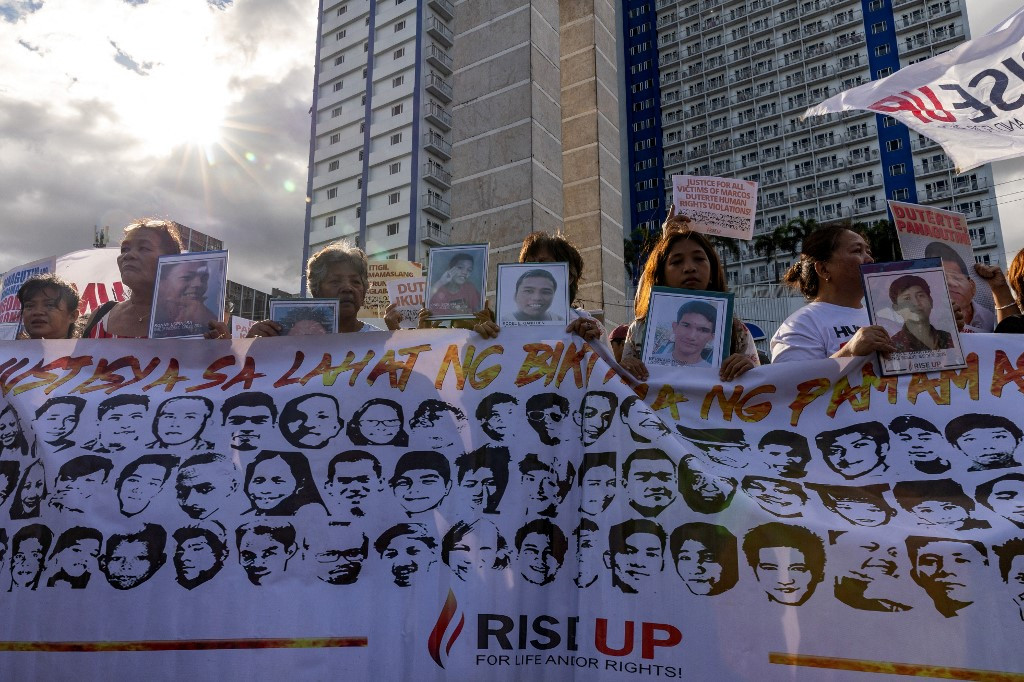Philippine president Rodrigo Duterte gained international notoriety with his violent ‘war on drugs’ – a campaign of violence targeting the country’s poor that claimed thousands of lives. He is now in a cell in The Hague, awaiting trial at the International Criminal Court, but it remains to be seen what will happen in the Philippines.
Duterte came to power in 2016 after a resounding election victory. He was often mentioned in the same breath as Trump and Brexit as expressions of the right-wing breakthrough that year but, early in his presidency, Duterte formed an awkward alliance with part of the Philippine Left.
Much of Duterte’s success was due to specific domestic circumstances. After popular protests overthrew dictator Ferdinand Marcos in 1986, ‘democracy’ was restored in the Philippines. From then on, the power struggle within the country’s capitalist class was again largely fought out through elections. Successive presidents promised to deliver on the high hopes of better times called forth by the uprising against Marcos never tackled the causes of much of the misery in the country. Countering the poverty of small farmers would require land reform. Better and more jobs would require large-scale policies that go against the interests of capitalists who got rich thanks to cheap labour-power and the export of cheap commodities. Unlike many other countries, the Philippine economy saw high growth rates for much of the post-2008 period but many ordinary Filipinos noticed little of this.
Duterte cleverly exploited discontent over the gap between lofty rhetoric and the daily reality of persistent poverty. The support for Duterte should largely be seen as an expression of dissatisfaction with the political system as it had taken shape after 1986. He was a relative outsider and promised to do everything differently. With his sleeves rolled up, coarse language and often misogynistic jokes, he cultivated a folksy and macho image. Duterte promised to end temporary contracts and tackle exploitation by foreign investors. He would be, he declared, the country’s first leftist, even socialist president.
Another recurring element in Duterte’s election campaign was the promise of violence. Crime, especially that committed by drug addicts, had brought the country to the brink of collapse, he insisted time and time again. Duterte promised to intervene with brute force. The fish in the Pasay river would gorge themselves on the dumped bodies, the presidential candidate declared. Duterte was by no means the first Filipino politician to promise repressive law-and-order policies, but he went particularly far in doing so.[1]
It quickly became clear that Duterte’s ‘progressive’ statements during the campaign did not amount to much. But even before his official inauguration as president, the killings began. Alleged drug addicts were hunted down and killed in increasing numbers. Overwhelmingly, the victims belonged to country’s poor and exploited, pedicab drivers, builders, street vendors… At first, victims were wrapped in tape and stabbed to death. The tape smothers the screams and keeps in the blood. Then, victims were increasingly shot in the streets. Cardboard signs with texts like ‘I was a pusher’ were often left next to the corpses. Others were shot to death in supposed shoot-outs with the police.
Strange comrades
Duterte’s presidency had another striking feature: his alliance with part of the Filipino Left. In the Philippines, the Maoist Communist Party of the Philippines (CPP) has been waging a guerrilla war for decades.[2] Besides the underground CPP, there is a network of above-ground political and social organizations that share the CPP’s vision for Philippine society. This is called the National-Democratic or ND bloc.
NDs had been working together with Duterte already for many years. During his roughly three decades as mayor of Davao City, Duterte had fostered relations with both the aboveground NDs and the CPP. It was also in Davao City that he first implanted his violent brand of crime-fighting; the ‘Davao Death Squad’ killed hundreds during Duterte’s mayorship. In the final stages of the 2016 presidential campaign, it became clear that the NDs, who initially supported another bourgeois politician, had switched to Duterte.
What followed after Duterte’s election was one of the strangest episodes in Philippine politics. Duterte rewarded his ND supporters with the offer of cabinet posts in his government. The National-Democratic Front (NDF, the diplomatic wing of the CPP) nominated prominent ND leaders to serve under Duterte: Rafael Mariano of the peasant movement KMP, academic Judy Taguiwalo, now of IBON foundation, and Liza Maza, a former Member of the House of Representatives for ND party-lists took on Cabinet level posts. Joel Maglunsod, also a former party-list representative and leader of the ND labour centre Kilusang Mayo Uno, became Undersecretary for the Department of Labor and Employment.
ND expectations for Duterte reached new heights. Jose Maria Sison, the first chairperson of the CPP and, in 2016, head of the NDF had been one of the first ND leaders to give Duterte his blessing. Sison, a former lecturer of Duterte, expressed high hopes for the negotiations with the Duterte government and looked forward to returning home from his exile in the Netherlands. The CPP itself described its relationship with the president as the forging of an alliance. During Duterte’s first State of the Nation Address in 2016, usually the occasion for large-scale protests, NDs marched behind a banner calling for support for Duterte’s ‘progressive programmes’. After the rally, Duterte met with ND-leaders in the presidential palace, posing for photos with fists raised. For the ND movement, the choice to work with Duterte was clear, wrote one of its members of the House of Representatives: ‘choose the side which has allied with the revolutionary forces in promoting the welfare of the people. Choose the political force capable of uniting the people against foreign domination, feudal oppression, and systemic corruption’.[3]
Fellow-travellers of the NDs went along with this strange alliance, even as the death toll of the so-called war on drugs kept rising. The killings were actually the work of drug lords silencing their minions, E. San Juan Jr. wrote in November 2017. Duterte had ‘exploded the century-long stranglehold of global finance capitalism’.[4] ‘Duterte’s anti-imperialist policy goes beyond rhetoric; it is real and persistent’, another academic declared.[5] Marawi, a city in the south of country, was overrun by IS-inspired militants in May 2017. Online, rumours swirled that the attack on Marawi was a CIA plot to destabilize Duterte. The NDF claimed that it had ordered its guerrilla-fighters to assist the government army.[6] The previously unthinkable had become real.
By then, the alliance with the NDs had already started to crack. In early 2017, Duterte lifted the ceasefire with the CPP. Once president, it became quickly become clear to Duterte that the army was a much more useful ally, and this army is obviously very hostile to the guerrillas and what it considers its sympathizers. But the ND cabinet members stayed at their posts. The last one, Liza Maza, resigned in August 2018.
Comeback of the Marcos dynasty
Another key ally of Duterte was the Marcos dynasty. The dictator’s family had always maintained a power base in the north of the country and had long been working on their political comeback. In 2010, Ferdinand ‘Bongbong’ Marcos Jr, now president, campaigned for the Senate—incidentally along the NDs. In 2016, he narrowly lost the vice-presidential election but his alliance with Sara Duterte, the daughter of, earned Ferdinand Marcos Jr the presidency in 2022. Sara Duterte became vice-president.
The fact that Duterte has now been arrested has everything to do with the break-up of this alliance. Sara Duterte and the Marcos camp are not only embroiled in a fierce war of words, including death threats. Marcos and his allies have been working for months to undermine the position of the Duterte family through revelations of corruption. Why the alliance fell apart is not clear, but this is not really important either. It is mostly a vulgar fight for power and wealth. There are some differences though. Under Duterte, the Philippines developed closer ties with China. This was a rather controversial step, as the Philippines is faced with continuing Chinese claims over part of its territorial waters. With a China-obsessed Trump in the White House, Marcos Jr. has again shifted towards the US.
In the Philippines, Duterte still enjoys considerable support. If he were to stand trial there, his supporters would try to delay the trial or perhaps even let it end in acquittal. The advantage of a trial in The Hague for Marcos is that Duterte is much weaker there.
Opportunistic alliances ending in bitter enmity, violence, corruption… in all this, Duterte was not unique. What was special was how far he went, how deadly his rule was. The death toll from government violence during his presidency is estimated at somewhere between 6,000 and 30,000.[7] A trial in The Hague would be a fitting end to a political career that was as bizarre as it was repugnant.
But would the end of Duterte’s career also mean the end of Dutertismo? Filipino socialist Herbert Docena is worried, writing on Facebook: ‘Duterte will seize the moment to portray himself as the victim, standing up to the “white” imperialists enforcing selective justice, the morality of power.’ Duterte would not be entirely incorrect. He is not in jail because he is a mass murderer, but because he is a mass murderer who is losing to a rival dynasty. In the Philippines, Duterte’s arrest has led to several rallies in support of the former president. For now, it is an open question whether Sara Duterte or someone else will be able to galvanise anger over Duterte’s arrest. Filipino journalist and human rights activist Carlos Conde said Duterte’s arrest was a ‘pleasant surprise’ as justice in the Philippines was almost impossible to hope for. That Durterte is now finally detained will hopefully offer some comfort to the loved ones of his victims.
[1] Alex de Jong, ‘The Philippines’ New Strongman’, https://jacobin.com/2016/05/philippines-duterte-populism-marcos-neoliberalism
[2] Much of the literature on Maoism in the Philippines only covers the period up to the 1990s. For a general history, see, among others, Kathleen Weekley, The Communist Party of the Philippines, 1968-1993: A Story of its Theory and Practice (Manila, 2006). Another useful book is P.N. Abinales, Fellow Traveler: Essays on Filipino Communism (Manila, 2001). Joseph Scalice has written on especially the genesis of the movement. See Joseph Scalice, The Drama of Dictatorship. Martial Law and the Communist Parties of the Philippines (New York, 2023). In recent years, the CPP-led guerilla has declined in strength: Alex de Jong, ‘After decades, an insurgency falters. Philippine Maoists under pressure’, https://tempestmag.org/2025/01/after-decades-an-insurgency-falters.
[3] Mong Palatino, ‘How to be a Leftist in the time of Duterte’, https://manilatoday.net/how-to-be-a-leftist-in-the-time-of-duterte/.
[4] E. San Juan Jr., ‘Interviewing Dr. Kenneth Bauzon on The Duterte Presidency Before The 2016 US Elections’, https://countercurrents.org/2016/11/interviewing-dr-kenneth-bauzon-on-the-duterte-presidency-before-the-2016-us-elections/.
[5] Andre Vltchek, ‘Tough-Talking Philippine President Duterte’, https://countercurrents.org/2016/12/tough-talking-philippine-president-duterte.
[6] ‘NDFP orders NPA to help AFP fight terrorists in Marawi’, https://newsinfo.inquirer.net/903495/ndfp-orders-npa-to-help-afp-fight-terrorists-in-marawi.
[7] Patricia Evangelista provides an account of the so-called ‘war on drugs’ in: Some People Need Killing. A Memoir of Murder in My Country (New York, 2023).

